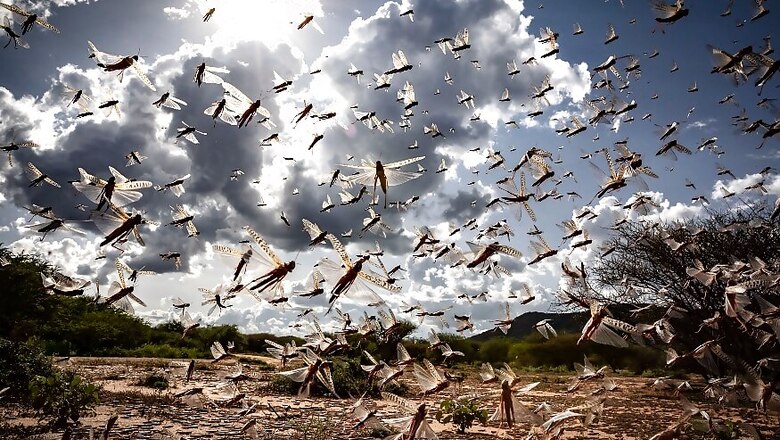
views
Aviation regulator DGCA on Friday issued guidelines for stakeholders like pilots and engineers on how to deal with locust swarms, saying they pose a threat to aircraft in the critical landing and takeoff phase of a flight.
India is battling the worst desert locust invasion in more than 21 years. The crop-destroying swarms first attacked Rajasthan and have now spread to Punjab, Gujarat, Maharashtra and Madhya Pradesh.
"Generally, locusts are found at lower levels and therefore pose a threat to aircraft in the critical landing and takeoff phase of the flight. Almost all air intake ports of the aircraft will be prone to ingestion in large numbers if the aircraft flies through a swarm (areas like engine inlet, air-conditioning pack inlet etc.)," the regulator said in its circular.
Pitot and static sources can also get partially or fully blocked while flying through locust swarms, the Directorate General of Civil Aviation said. "Blocked pitot and static sources lead to erroneous instrument indications, especially unreliable airspeed and altimeter indications," it said. A pitot tube in aeroplanes is used to measure the flow speed of the wind.




















Comments
0 comment